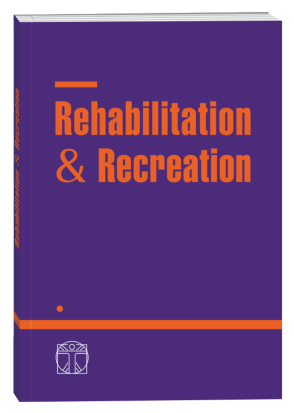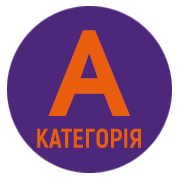BASIC ASPECTS OF PHYSICAL THERAPY FOR PEOPLE WITH COMPUTER NECK SYNDROME
DOI:
https://doi.org/10.32782/2522-1795.2024.18.3.11Keywords:
computer neck syndrome, rehabilitation, physical therapy, programmeAbstract
Purpose is to describe, substantiate and systematise the basic aspects of physical therapy for people with computer neck syndrome. Materials and Methods. Theoretical methods of scientific research were applied, namely: analysis, synthesis, abstraction, specification, induction, deduction, logical methods, systematic methods. Systematic methods allowed us to identify and analyse all the factors that affect the development and course of computer neck syndrome, as well as the effectiveness of physical therapy; understand the relationships between these factors and their impact on the system as a whole; to develop a scheme of examination for people with computer neck syndrome, taking into account all aspects of this syndrome; to develop an algorithm of actions of a physical therapist for the effective implementation of physical therapy for people with computer neck syndrome; to develop a programme of physical therapy for people with computer neck syndrome. The systematic methods of theoretical research allowed us to gain a deep understanding of computer neck syndrome and search for the basic aspects of physical therapy. This understanding contributed to the development of a new physical therapy programme for individuals with computer neck syndrome, as well as to the identification of factors that influence their effectiveness. Results. The main prerequisites for successful physical therapy are to take into account the manifestations of computer neck syndrome, symptoms, complaints of patients and appropriately selected assessment tools when setting goals for the rehabilitation process, which will help not only to implement physical therapy, but also to monitor the effectiveness of physical therapy programmes and their timely correction. To unify the rehabilitation process, it is necessary to base it on the complaints of patients with computer neck syndrome that correspond to the domains of the International Classification of Functioning. Based on the prerequisites for the introduction of physical therapy, a programme of physical therapy for patients with computer neck syndrome was developed. The introduction of physical therapy for patients with computer neck syndrome is based on a patient-oriented choice of intervention methods aimed at solving primarily problems that cause limitations in the usual daily activities. A clearly defined combination of different means helps to improve efficiency and achieve the set tasks in a shorter time, as well as to interest and motivate patients, improves the psycho-emotional background in the classroom, which will contribute to a more active involvement of the patient in physical therapy, physical activity during the day. The proposed algorithm of actions for a physical therapist has a number of basic components aimed at an individualised approach to each patient with computer neck syndrome. Adherence to the algorithm systemises the rehabilitation process, helps to reduce the time for the implementation of physical therapy, helps patients to better understand their condition and rehabilitation plan, which contributes to better compliance with the recommendations. Identification of the factors that cause the symptoms of computer neck syndrome allows us to fully develop recommendations for modifying the patient’s lifestyle and working conditions, which will help prevent relapses. Conclusions. The main prerequisites for the successful implementation of physical therapy are the consideration of patients’ complaints that correspond to the domains of the International Classification of Functioning (ICF) and appropriately selected assessment tools, which will help not only the implementation of physical therapy, but also the monitoring of the effectiveness of physical therapy programmes and their timely correction. During the implementation of a physical therapy programme, physical therapy tools should be combined and alternated in such a way that the effect of one tool is enhanced by another. It is important to interest and motivate patients, which will help to normalise the psycho-emotional background in the classroom. An important aspect of the successful implementation of physical therapy is the algorithm of a specialist’s actions, which systemises the rehabilitation process, helps to reduce the time for the implementation of physical therapy, helps patients to better understand their condition and rehabilitation plan, and encourages better compliance with recommendations.
References
Chu E.Y., Mok T.K.S., Ng G.S.N., Chu E.C.P. Pediatric Text Neck Syndrome. Cureus, 2023. 15(4).
David D., Giannini C., Chiarelli F., Mohn A. Text neck syndrome in children and adolescents. Int J Environ Res Public Health, 2021. 18(4):1565. https://doi.org/10.3390/ijerph18041565.
Eric Chun-Pu Chu. Preventing the progression of text neck in a young man: A case report. Radiology Case Reports. 2022. Volume 17, Issue 3. 978–982. https://doi.org/10.1016/j.radcr.2021.12.053.
Fares J., Fares M.Y., Fares Y. Musculoskeletal neck pain in children and adolescents: Risk factors and complications.Surg. Neurol. Int. 2017. 87, 2.
Hestbaek L., Leboeuf-Yde C., Kyvik K.O. The course of low back pain from adolescence to adulthood: Eight-year follow-up of 9600 twins. Spine, 2006. 31, 468–472.
Javed A., Andama G., Rehman A., Ahmed M.W., Ali S.H., Ahmed M.A., Bibi M., Khalid A. Text Neck Syndrome and Associated Risk Factors: Prevalence in Medical Students. The Therapist, 2023. 4(03):38–42. https://doi.org/10.54393/tt.v4i03.167.
Kamaraj N., Rajasekar V.D., Rangasamy S. A study on prevalence of text neck syndrome among under-graduate students of a medical college in Puducherry. International Journal of Community Medicine and Public Health, 2022. 9(7), 2919–2922. https://doi.org/10.18203/2394-6040.ijcmph20221759.
Kamper S.J., Henschke N., Hestbaek L., Dunn K.M., Williams C. Musculoskeletal pain in children and adolescents. Braz J. Phys. Ther. 2016. 202, 75–84.
Sarraf F., Abbasi S., Varmazyar S. Self-Management Exercises Intervention on Text Neck Syndrome Among University Students Using Smartphones. Pain Manag Nurs. 2023. 24(6):595–602. doi: 10.1016/j.pmn.2023.04.005.
Shinde S., Bhende R. Evidence based treatment strategies for “Text Neck Syndrome”: a review. International Journal of Occupational Safety and Health, 2023. 13(2), 245–257. https://doi.org/10.3126/ijosh.v13i2.48679.
Sukari A.A.A., Sarwinder S., Bohari M.H., Idris Z., Ghani A.R.I., Abdullah J.M. Examining the range of motion of the cervical spine: utilising different bedside instruments. Malays J Med Sci. 2021. 28(2):100–105. https://doi.org/10.21315/mjms2021.28.2.9.
The Global Spine Care Initiative: care pathway for people with spine-related concerns. Eur Spine J. 2018. 27(Suppl 6):901–914. doi: 10.1007/s00586-018-5721-y.
The Global Spine Care Initiative: model of care and implementation. Eur Spine J. 2018. 27(Suppl 6):925–945. doi: 10.1007/s00586-018-5720-z.
Yaşarer Ö., Yilmaz H.G., Doğan H. (2023). Comparison of two different delivery methods of home-based exercise on neck pain. Somatosensory & Motor Research, 2023. 1–8. https://doi.org/10.1080/08990220.2023.2194389.
URL: https://stanfordmedicine25.stanford.edu/the25/shoulder.html.
Downloads
Published
How to Cite
Issue
Section
License
Copyright (c) 2024 Н. Є. Нестерчук

This work is licensed under a Creative Commons Attribution-NonCommercial-NoDerivatives 4.0 International License.











